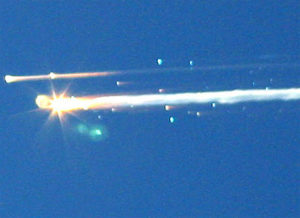
Granted, most organizations are not NASA. They are not multi-billion research, development, and operations agencies full of rocket scientists, astronauts, and other highly trained specialist sending people into space. But in the 21st century, even small companies and their employees are working in an exceedingly complex, fast-paced, and high-tech environment that requires constant attention to the safety and security of their operations. Thus, a story about NASA and the lessons learned from it can give some valuable insight into creating a high-reliability organization.
On February 1, 2003, the Space Shuttle Columbia disintegrated upon return to Earth’s atmosphere, killing all seven crew members, resulting in a two-year halt to all manned space flights, and effectively ending the shuttle program. The immediate cause of the failure was a crack in the left wing, which was hit by insulating foam during launch. However, there were underlying organizational and cultural issues that directly contributed to the disaster. According to the Columbia Accident Investigation Board (CAIB) Report, NASA’s organizational structure, decision-making, and risk-assessment processes were so siloed and conflict-laden that failure was inevitable.
One example was the position of Shuttle Program Manager, where one person is responsible for achieving safe, timely, and cost-effective launches – three goals that are usually incompatible (“Cheap, Fast, Good – Pick Two!”). Another example is the tacit acceptance of deviations from explicit design criteria when these occurred on multiple missions without causing failures. A third example is the style of communication, which seemed oriented inwards, defensive, and encouraging group-think, rather than open and inquisitive.
Since then, NASA and other organizations have implemented changes in their safety and security procedures based on five cultural factors, which we will discuss in the next part.
